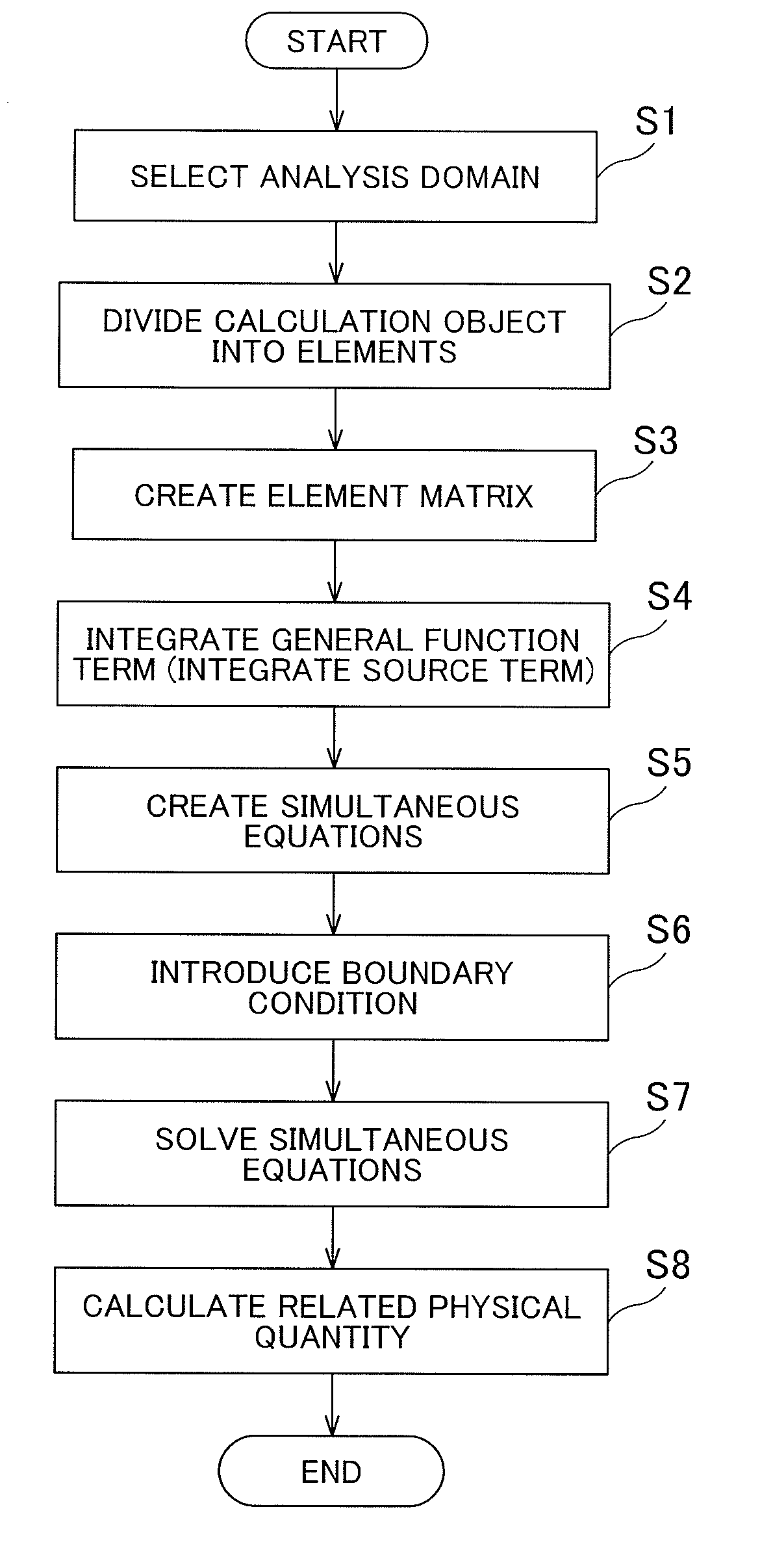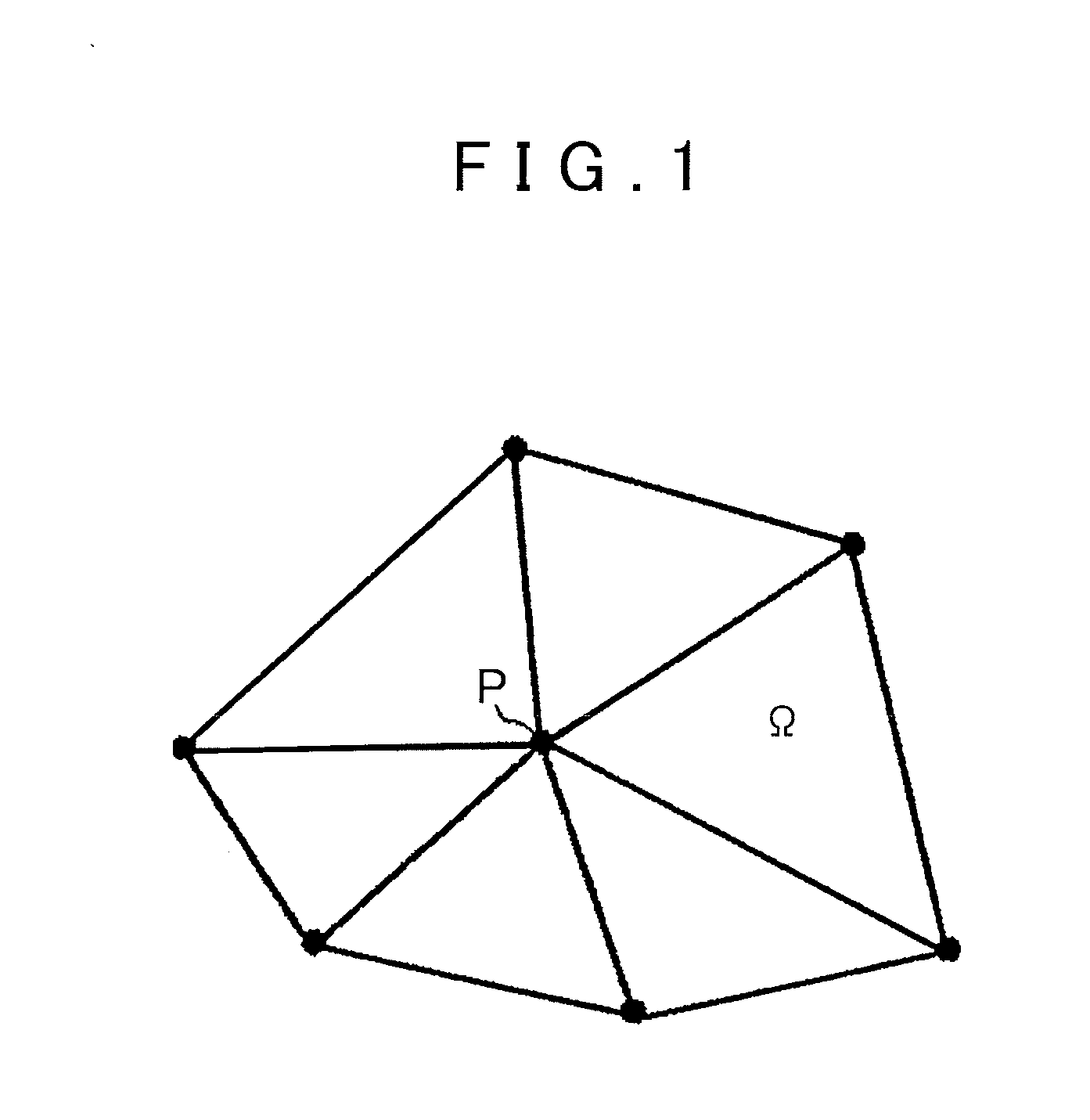Analysis method using finite element method, and analytical computation program using finite element method
a technology of analysis method and analytical computation program, which is applied in the direction of computer aided design, design optimisation/simulation, instruments, etc., can solve the problems of insatisfactory conservation law at the node level, inability to meet the conservation law, and inability to use the finite element method
- Summary
- Abstract
- Description
- Claims
- Application Information
AI Technical Summary
Benefits of technology
Problems solved by technology
Method used
Image
Examples
Embodiment Construction
[0153]Some embodiments of the invention will be described in detail. In the following description, the embodiments are roughly classified into the case of a two-dimensional triangular element, the case of a three-dimensional tetrahedral element, the case of a two-dimensional quadrangular element, the case of a three-dimensional hexahedral element, and the case of a three-dimensional pentahedral element. While the analysis method of the finite element method is explained in the following description, the analysis method is generally programmed into an analysis program, according to which a computer performs arithmetic processing. In other words, each step illustrated in FIG. 57 constitutes an analytical computation program that causes the computer to perform analytical computations using the finite element method.
[0154]Initially, the flow of the analysis method using the finite element method will be roughly explained with reference to FIG. 57. When an object to be analyzed is numeri...
PUM
 Login to View More
Login to View More Abstract
Description
Claims
Application Information
 Login to View More
Login to View More - R&D
- Intellectual Property
- Life Sciences
- Materials
- Tech Scout
- Unparalleled Data Quality
- Higher Quality Content
- 60% Fewer Hallucinations
Browse by: Latest US Patents, China's latest patents, Technical Efficacy Thesaurus, Application Domain, Technology Topic, Popular Technical Reports.
© 2025 PatSnap. All rights reserved.Legal|Privacy policy|Modern Slavery Act Transparency Statement|Sitemap|About US| Contact US: help@patsnap.com



